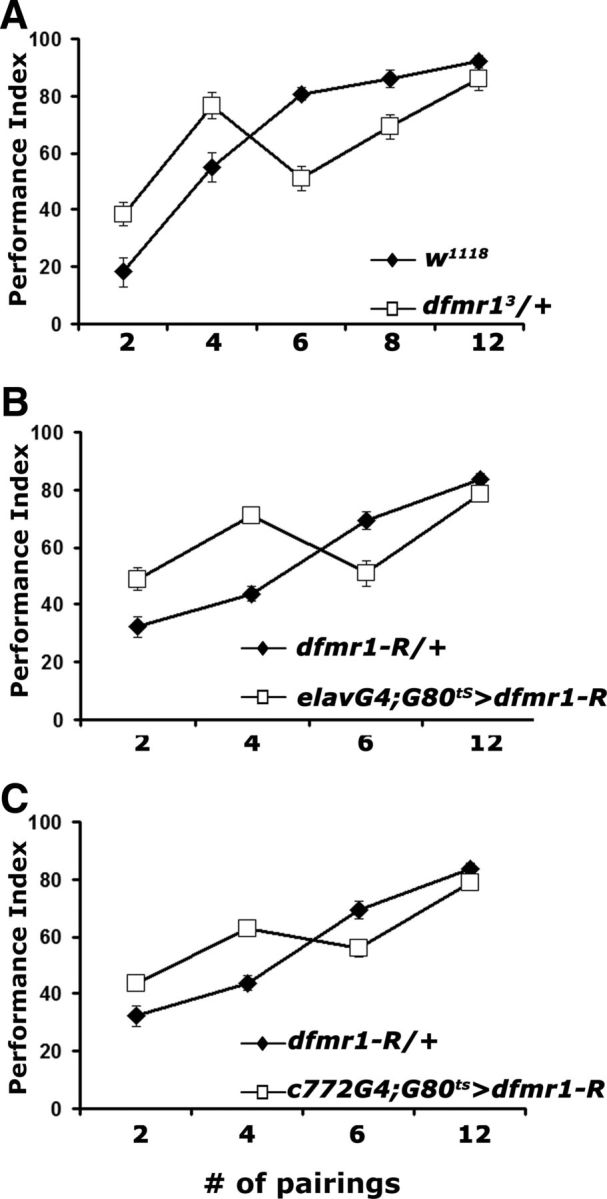Figure 3.

US/CS pairing specific learning deficits of dfmr1 mutant heterozygotes. Mean PIs and their SEMs (PI ± SEM) are shown for all experiments. Where appropriate, animals were heterozygous for all transgenes and Gal4 drivers. A, Performance immediately after training (learning) with the indicated number of pairings. n = 10 for all pairings. ANOVA indicated significant differences (p < 0.0001). Planned comparisons (contrast analysis) indicated that the performance of dfmr13/+ (open squares) was significantly different from that of w1118 (open squares) after conditioning with 2, 4, and 6 pairings, but not after 8 (p = 0.03) or 12 pairings (p = 0.25). B, Learning after training with the indicated number of pairings of animals with adult-specific pan-neuronal abrogation of dFMRP (open squares). Differences were indicated by ANOVA (p < 0.0001) and resolved as significant with contrast analysis after 2, 4, and 6 pairings (p < 0.0001), but not after 12 pairings (p = 0.12). n = 10 for all pairings. C, Adult-specific abrogation of dFMRP in α/β MB lobes with c772 (open squares) significantly impaired learning (p < 0.001) compared with transgene heterozygote controls (filled diamonds), except after 12 pairings (p = 0.01). n = 10 for all pairings.
